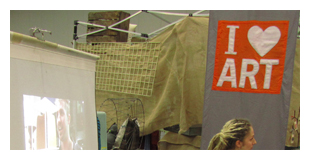Featured Indicators
 Urban agriculture
A vacant lot blooms with edible wildflowers. A community garden teems with people on a Sunday aftern...
Urban agriculture
A vacant lot blooms with edible wildflowers. A community garden teems with people on a Sunday aftern...
 DIY
Many evolutionary biologists believe that our hands — a biological marvel unique to the human spec...
DIY
Many evolutionary biologists believe that our hands — a biological marvel unique to the human spec...
Cultural Indicator
Butchery

A lean and tattooed hipster holds a cleaver above a pig carcass, explaining the nuances of leaf lard to a group of rapt youths with fedoras, skinny jeans, and ironic moustaches. They’re packed into an urban loft space with raw beams and distressed floors, and as they clutch their martini glasses and preserve the carnage with their iPhones, the butcher asks for a show of hands: How many former vegetarians and vegans do we have tonight? It’s almost unanimous. The iPhones waggle proudly in the air.
It used to be that a butcher was a large man with a ruddy complexion, blood-stained apron draped across his enormous paunch. He may not have been the hippest or the brightest of fellas, but he knew how to hack meat and recommend a good way to cook a tongue. High-heeled housewives would walk gingerly on the sawdusty floors of his shop, reassured by his hearty affability, but slightly appalled by the raw primality of it all.
With the rise of the gleaming supermarket in the 1950s, we saw the friendly neighborhood butcher make a slow retreat away from the foreground of the household chore circuit. Relegated to the nether-regions of a meat counter, emerging perhaps to cut a neat stack of bologna slices to be triple-wrapped in plastic, the butcher became a vanishing species along with the baker and the candlestick-maker (who really deserve ‘cultural indicator’ entries of their own.)
Enter a new century, and the rise of the “rock star” butcher. This time, not only has he stepped out from behind the supermarket counter to open up his own specialty shop with a retro-chic name and logo, but he’s offering classes to the public that sell out faster than the latest iPhone. Far from being a vaguely distasteful tradesperson, he (or she — there are many cleaver-wielding women who have gotten a lot of press these days, tattoos and fierce expressions and all) has become elevated to the status of local hero, bringing us back to a more connected place when we ate animals nose-to-tail without a hint of smugness, and butchery was considered a vital skill, if not an art. The contemporary “artisanal” butcher is as much a warrior as his Gen Y farmer friends — he’s aggressively supporting local farmers, he’s committed to getting people to move beyond the five cuts of meat most Americans know, and he can hold forth on the nuances of grass-fed versus grass-finished as you stare at the postmodern tattoo on his well-sculpted bicep.
And what about the rise of vegetarianism and veganism? Here’s a telling study: a recent telephone poll revealed that 7% of Americans said they were vegetarians. When these folks were called back a week later and asked what they had eaten the day before, a full two thirds of them had eaten at least one animal product. In short, vegetarianism, like most things in human life, is largely an aspiration. Most vegetarians will lapse back into the animal kingdom, for a variety of reasons. Fortunately, a former vegetarian will still eat a lot of vegetables, and will often bring a more conscious sensibility to her animal-eating. Though our new hipster butcher may still be steeped in blood, it’s the blood of a local grass-fed animal that had a good life and is helping to keep a small farmer afloat. Which is exactly what we need if the agrarian renaissance is to succeed.
© egg, 2012. Excerpt from upcoming book by Hilary Bromberg, The Birth of Neonaturism.